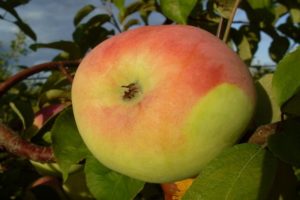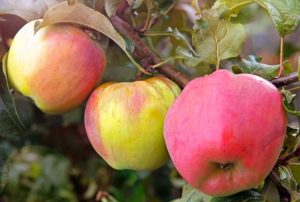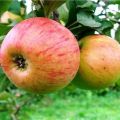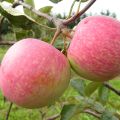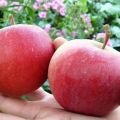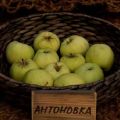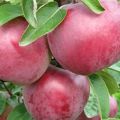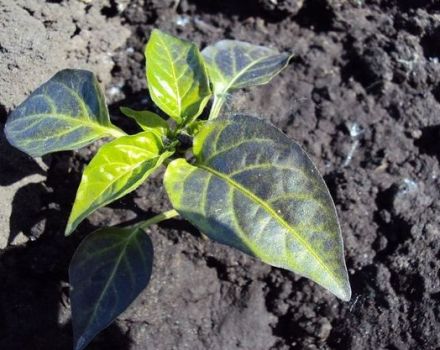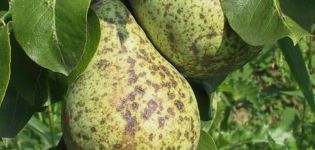Description and characteristics of Gloucester apple trees, planting and growing rules
The fruit of the apple tree contains many vitamins and minerals. The culture is bred for their own use and to replenish the budget. One of the common varieties is Gloucester, whose fruits reveal their taste in the middle of winter. Further information on the use of Gloucester apples, the pros and cons, the nuances of growing crops on the site.
How the Gloucester variety was bred
The Gloucester apple tree was developed by German breeders in the middle of the 20th century. For this, experts crossed 2 varieties: Glockenapfel and Richard Delicious. Gloucester inherited the best qualities from "parents". The variety is very popular in different European countries.
Pros and cons of apple tree
The positive qualities of culture include the following characteristics:
- good taste and appearance of the fruit;
- high productivity;
- early maturity;
- excellent keeping quality and transportability of fruits;
- good immunity;
- unpretentiousness of the plant in care.
The negative qualities include weak frost resistance and large dimensions of the tree.
Description
At a young age, the Gloucester apple tree has a rounded shape. Over time, it becomes pyramidal. Leaves are dark green, rounded, serrated at the edges. The root system is superficial, branched.
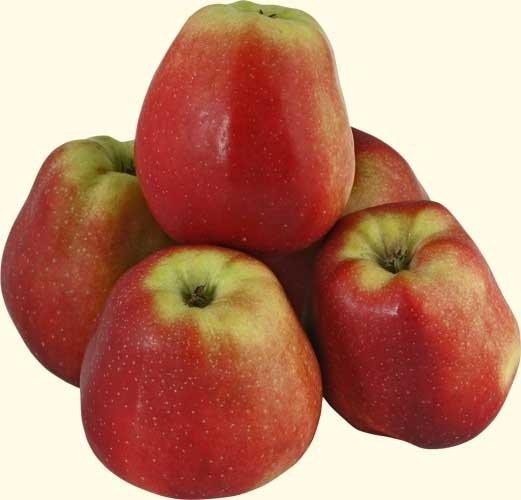
Dimensions of an adult tree
Without crown formation, the Gloucester apple tree can reach a height of 8 meters. This is one of the significant disadvantages of the variety. A tall tree is difficult to maintain and harvest.
Annual growth
The variety is distinguished by its rapid growth. The crown of an adult plant spreads up to 3.5 meters wide. Shoots predominantly move away from the trunk at an acute angle. Fruits are formed on ringlets and annual shoots.
Specifications
Up to 75 kilograms of rounded-conical apples are harvested from the tree. Their weight varies between 160-200 grams. The fruit is colored yellow. A red blush runs over the entire surface. Gloucester apple is harvested at the end of September. The fruit reaches its consumer maturity in the middle of winter.
Growing areas
The apple tree of this variety is cultivated in many European countries.Gloucester is popular in the southern regions of Russia and Belarus, in Moldova, in Ukraine.
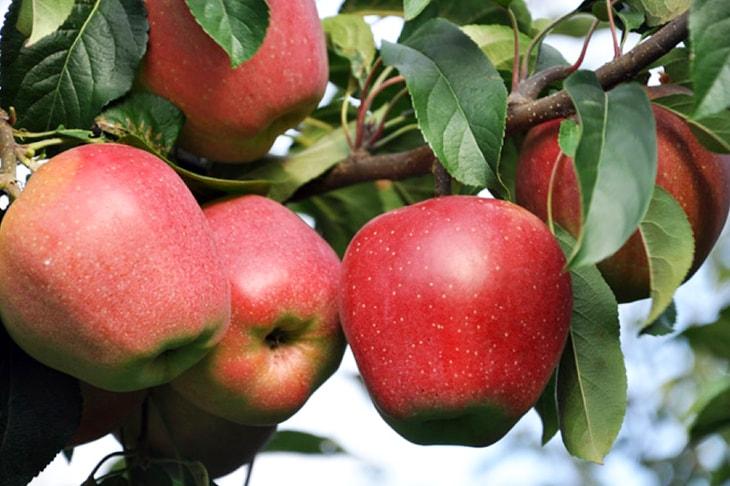
Winter hardiness
The frost resistance of the culture is average. It does not tolerate winters in cold regions. Without loss of yield, the Gloucester apple tree will withstand frosts down to -22 ° C. Therefore, the variety is recommended to be grown in warm areas.
Immunity to infections, fungi and bacteria
The culture has good immunity. But under unfavorable climatic conditions, it can be affected by scab. High plant resistance to powdery mildew, fruit rot. In spring, the bark of trees is burned by the bright rays of the sun.
Therefore, experienced gardeners recommend treating the trunks with a lime solution at the end of autumn. The procedure also helps to destroy the larvae of harmful insects.
Apple tasting score
The pulp of the fruit is creamy, juicy. They contain a large amount of vitamins and minerals. The fruit tastes sweet and sour. Tasting score - 4.5 points out of 5 possible.

Early maturity
The apple tree begins to bear fruit in the 4-5th year after planting. On dwarf rootstocks, the gardener can harvest the first crop in the 3rd year after planting the tree in the ground.
The nuances of ripening and fruiting
Fruits are tied on annual shoots and ringlets. Harvested in the first month of autumn. The fruit reaches its technical ripeness after a little lay down.
Pollinating varieties
Gloucester is a self-fertile variety. But when pollinators are planted nearby, the yield increases significantly. The following varieties of apple trees are used:
- Jonathan.
- Spartan.
- Idared.
- Gala.
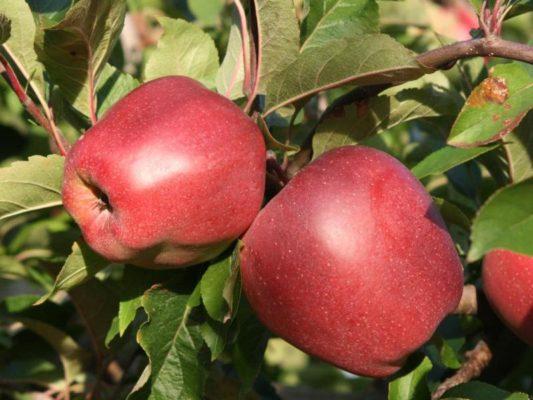
Additional Information. An apple is 25% air, so it does not sink in water.
First harvest
The gardener can remove the first fruits in the 4-5th year after planting the tree. If an apple tree is grafted onto a dwarf stock, then the fruit is tied 2-3 years after planting. 40-75 kilograms of apples are harvested from an adult plant.
The timing of fruit ripening
The harvest is removed in September. After lying in storage for 2-3 months, fruits reveal their taste even more. Apples reach consumer maturity in mid-January.
Periodicity
The apple tree of Gloucester is distinguished by the regularity of fruiting. Yields increase every year, reaching a peak at the age of 10-12 years. Up to 75 kilograms of fruit are harvested from one plant.

Storage and use of apple trees
The fruits are consumed mainly fresh. Juicy fruits can also be juiced. In addition, apples are used as a filling for confectionery. Store fruits in a cool place.
Agrotechnics
The yield and immunity of the crop depend on correctly performed agrotechnical measures.
Landing
Trees are planted 2 years old. They purchase seedlings in plant nurseries or garden centers from reliable sellers.
Disembarkation season
Young trees are planted in open ground in spring or autumn. The first option is preferable for regions with a temperate climate. In warm areas, planting is allowed in the fall.

Preparation of seedlings
The root system of the apple tree is placed in a container with warm water. For the prevention of diseases, you can add several crystals of potassium permanganate. If there are damaged areas, they are cut and disinfected.
Scheme and rules for planting trees
An apple tree is planted in open ground as follows:
- dig a hole 60 centimeters deep, 1 meter in diameter;
- pour in a fertile substrate;
- a seedling is installed in the middle, the roots are straightened, covered with earth;
- water abundantly, mulch;
- a stake is driven in next to the seedling.
Important! The root collar should be buried no more than 2-3 centimeters.

Watering rules
The apple tree of Gloucester is watered in stages. For the first time in a season, the land is irrigated before bud break.The tree is then watered 20 days after flowering. The third time, the procedure is carried out 2 weeks before harvest. Depending on the age, the plants use 30 to 120 liters of water.
Top dressing
Fertilize the soil in the 3rd year after planting the apple tree. In the spring, nitrogen is introduced, which promotes the growth of the vegetative mass. Then, before and after flowering, complex mineral fertilizers are used. In the summer, foliar feeding can be carried out.
How to prune
To stimulate the growth of lateral shoots, the top of the main stem is shortened in the first year. Then dry, sick, frozen branches are removed. Every year, the shoots that thicken the crown are cut off.
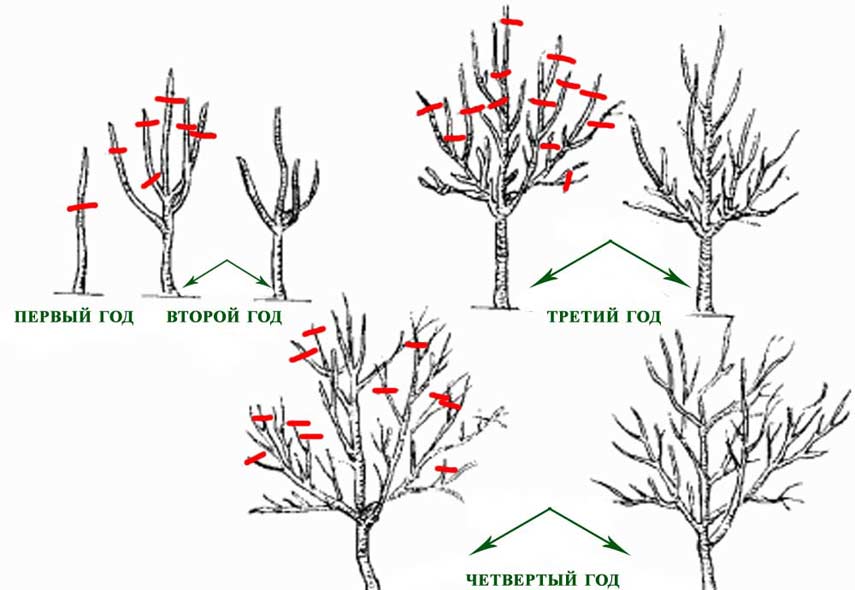
Shelter for the winter
In the southern regions, winter shelter is not required for the Gloucester apple tree. In colder areas, the tree is wrapped in agrofibre. The trunk circle is mulched with humus.
Apple tree treatment for diseases and insects
In early spring, to prevent diseases, preventive spraying with a solution of Bordeaux liquid is carried out. In order to prevent the appearance of insects, trees are treated with Karbofos, Nitrofen according to the instructions.
Subspecies and variants
Gloucester is used to produce other varieties of apple trees. The culture itself is grown on different rootstocks. The lifespan and height of trees depend on them.
On a dwarf rootstock
M9 is used as a stock. The tree reaches a height of 2.5 meters. It is convenient to pick fruits from such an apple tree. The consumer qualities of the fruit are preserved.
Columnar
Trees grafted onto a columnar rootstock take up very little space. This is a big plus if the gardener has a small plot. But the viability of such an apple tree is only 15 years.
